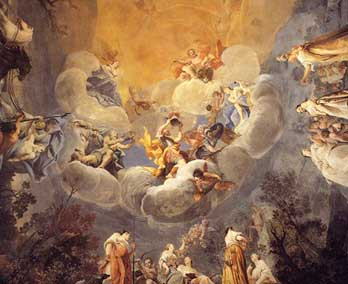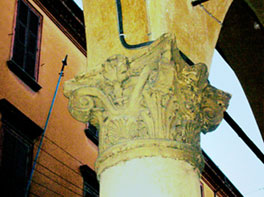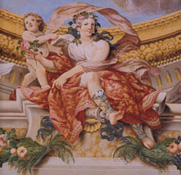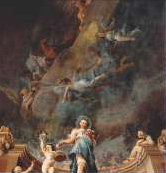|
BED AND BREAKFAST IN BOLOGNA ACCOMMODATION IN BOLOGNA ERBORISTERIA WEBMASTER |
||||||
|
|
During the 17th -18th Century the city, though important,
dominated by Rome sought splendour, immediately disguising it with
staircases, grotesquerie and inner gardens. Bologna long since became a
big textile centre, whereas in the plain, the Reno waters are diverted
towards the sea. At the end of the 17th Century, thanks to the Reno Canal, the number of flour-mill wheels already present in the 14th Century in Bologna was around 50, whereas there were 400 "industrial" wheels, the record for silk-mills. This increase was due to the fact that the Reno Canal power was divided in hundreds of smaller underground pipes, called "chiaviche", that enjoyed the natural ground slope. So Bologna turned into a big textile centre, a few centuries before the Industrial Revolution. To the North, the Reno river, that flowed into the Po, west of Ferrara and often flooded the plain, for a long time generated many conflicts between Bologna and Ferrara. It was only at the end of the 18th Century that its course was diverted to the sea after clearing away the Po di Primaro. The most known painter of Bolognese 17th century was Giuseppe Maria Crespi, nicknamed "Lo Spagnolo".
|
|
b u |
|||
|
General - Environment - Iron and Etruscan Age - Roman Age - Patron Saint- The Commune - Alma mater studiorum - Re Enzo - Porticoes - St Peter - Gothic - 14th Century - Piazza Maggiore - Aristocratic palaces - Brick and other stones - Early 15th Century - Archiginnasio - Counter Reformation Renaissance - 16th Century - Great portico ribbons - Frescoes in palaces - The "scenographic" city - Napoleon's republics - Fall of Church power - The Restoration - Haussmann style - The new Century - Floreal style - Rationalism - World War - Active preservation - Around 2000 |
||||||



